On April 2, 2008 PBS will air a two-hour special produced and written by the award-winning filmmaker Michael Kirk that draws much-needed attention to this universal reality.
As the population ages, many adult children are grappling with an unprecedented social, cultural, economic, and personal revolution as they transition into the primary caregiver role for their aging parents.
The first part of Caring for Your Parents underscores today's struggle to keep parents at home, tensions between siblings, and the complexity of shifting caregiver roles through an intimate look at five American families. In the end, the documentary contends successful caregiving requires one primary ingredient: LOVE.
Immediately after the broadcast, NBC medical correspondent, Dr. Art Ulene leads a conversation about caregiving. This panel discussion offers concrete advice and guidance on how to start the conversation, which is them, which is often the most difficult step in caregiving.
Wednesday, March 26, 2008
Friday, March 21, 2008
I ordered yet another book on elder caregiving today
Thursday, March 20, 2008
Monday, March 17, 2008
Saturday, March 15, 2008
Film Maker Interviews My Dad About 1921 Tulsa Riot



Today, Harold Jackson, of Non-Filtered Productions will interview my Dad, Juanita, and me about the 1921 Tulsa Massacre. (see February 14 post.) Mr Jackson flew in from Pennsylvania.
Details will follow.
Details will follow.
Karla Scott, My name is Harold Jackson with Non-Filtered Productions out of Pennsylvania. We are starting a documentary on the 1921 race riots in Tulsa. We are searching for survivors or decendants of survivors of that massacre. We would like to discuss having an on camera interview with you. Please contact me Harold Jackson as soon as possible at the information below. Thank you in advance for your time and consideration.
HAROLD JACKSON III
Karla,
I'm writing to tell you thanks for allowing me to talk with you and your family. You were a great deal of help and I don't think the project would be as good without your assistance. I hope you will be satisfied with the finished product. Thank you again and continued blessing for you and your family. Feel free to contact me with any questions.
Harold Jackson III
Non Filtered Productions
Karla,
I'm writing to tell you thanks for allowing me to talk with you and your family. You were a great deal of help and I don't think the project would be as good without your assistance. I hope you will be satisfied with the finished product. Thank you again and continued blessing for you and your family. Feel free to contact me with any questions.
Harold Jackson III
Non Filtered Productions
article about justice
by Barbara Palmer
Stanford Report, February 16, 2005 :
Harvard law professor and author Charles Ogletree Jr., a Stanford alumnus and former university trustee, sees himself as a student of history, he told members of the Black Pre-Law Society and others on Feb. 7.
So Ogletree was stunned to learn in 2002 about a 1921 race riot in Tulsa, Okla., which, by some estimates, killed hundreds of African Americans and by all accounts decimated a prosperous African American business district known as "Black Wall Street" in less than a day. It was the worst act of domestic terrorism ever perpetuated within the borders of the United States, the legal scholar said.
The district, called Greenwood, was home to black-owned banks, hotels and theaters and a black professional class, said Ogletree, who serves as counsel for the Reparations Coordinating Committee, which seeks reparations for the "contemporary victims of slavery and the century-long practice of de jure racial discrimination which followed slavery." For African Americans, Greenwood "was the mecca of all America," Ogletree said. "Hatred, bigotry and prejudice took it away in the blink of an eye," he said.
The obscurity of the 1921 riot is no accident, but the result of a decades-long "conspiracy of silence" so effective that until recently a former Tulsa mayor was unaware of the riot's occurrence, Ogletree told the Kresge Auditorium audience. And from 1921 until 2001, when a 185-page report on the riot commissioned by the Oklahoma state legislature was published, there was a "pervasive sense" that African Americans were the cause, rather than the victims, of mob violence, he said.Setting the record straight
By Ogletree's account, the spark that ignited the riot occurred after a 19-year-old black man named Dick Rowland entered an elevator in a Tulsa office building in order to find a bathroom open to him under the state's Jim Crow laws. In the elevator, he stepped on the foot of a 17-year-old white female elevator operator. She slapped Rowland, who fled the elevator. What happened next is "what happens in a Southern town," Ogletree said. "The reports were: 'Black man assaults white woman.' By evening it was: 'Black man rapes white woman.'"
According to the commission's 2001 report, Rowland was arrested and jailed at the Tulsa County courthouse, where shots later were fired between a white mob assembled in reaction to inflammatory news accounts of Rowland's arrest and blacks gathered to protect Rowland from lynching. A newspaper editorial that reportedly said Rowland's lynching was "likely" has disappeared from city and state archives. (The case against Rowland was later dismissed.)
As violence erupted, Tulsa police deputized and armed hundreds of white men and boys who traveled into Greenwood, where some joined a mob in shooting at residents and setting fire to black-owned businesses and residences. When the Oklahoma National Guard was called in to restore order, troops disarmed blacks and took thousands of African American residents into "protective custody" by mass arrest, leaving the neighborhood unprotected. Twenty-two square blocks—1,256 homes and virtually every other structure, including a library and hospital, churches and schools—lay in ashes the next day. The 2001 commission report concluded that it was impossible to determine the number of people killed in the riot, although it is probable that the dead numbered between 100 and 300.
A preliminary report issued in 2000 by the commission concluded that the race riot was the violent consequence of institutionalized racial hatred tolerated by federal, state, county and city police. Although the final commission report recommended that restitution be made to riot survivors and descendants, a state resolution for reparations failed.
Ogletree was among lawyers who in 2003 sued the Oklahoma governor and Tulsa mayor and chief of police in federal court on behalf of plaintiffs including more than 125 survivors, who ranged in age from 89 to 105 years. Lower courts denied the claim, saying that the statute of limitations had expired, and in December 2004, a federal appeals court voted not to grant a rehearing of the case. (Four of 13 judges dissented in the case.)
Ogletree plans to petition for a hearing of the case by the U.S. Supreme Court, he said. But whether or not the Supreme Court agrees to hear the case this year, "it is not going to go away," he said.
"The refusal to even consider meaningful remedy for these survivors is hard to understand," he said, citing the examples of reparations paid to Japanese interned during World War II and the recent apology and a $5 million scholarship fund in the state of Louisiana created by J. P. Morgan Chase following the discovery that its 19th-century predecessor banks had owned slaves that had been loan collateral.
The arrogance of opponents to reparations "takes our breath away," he said. "To think about a case where you have the evidence, you have the victims, you have the record and the argument is that it's too late," he said. "It makes our legal system a mockery and our justice system a sham.
"Until there is justice in Tulsa, there can be justice in no other place in America. We will fight with every legal, political and moral weapon we have."
Ogletree urged audience members not to focus on financial aspects of reparations. "It's really about justice. It's really about correcting the past. And it's really about trying to make sure as we move ahead as a nation that we really are one people, not many."
So Ogletree was stunned to learn in 2002 about a 1921 race riot in Tulsa, Okla., which, by some estimates, killed hundreds of African Americans and by all accounts decimated a prosperous African American business district known as "Black Wall Street" in less than a day. It was the worst act of domestic terrorism ever perpetuated within the borders of the United States, the legal scholar said.
The district, called Greenwood, was home to black-owned banks, hotels and theaters and a black professional class, said Ogletree, who serves as counsel for the Reparations Coordinating Committee, which seeks reparations for the "contemporary victims of slavery and the century-long practice of de jure racial discrimination which followed slavery." For African Americans, Greenwood "was the mecca of all America," Ogletree said. "Hatred, bigotry and prejudice took it away in the blink of an eye," he said.
The obscurity of the 1921 riot is no accident, but the result of a decades-long "conspiracy of silence" so effective that until recently a former Tulsa mayor was unaware of the riot's occurrence, Ogletree told the Kresge Auditorium audience. And from 1921 until 2001, when a 185-page report on the riot commissioned by the Oklahoma state legislature was published, there was a "pervasive sense" that African Americans were the cause, rather than the victims, of mob violence, he said.Setting the record straight
By Ogletree's account, the spark that ignited the riot occurred after a 19-year-old black man named Dick Rowland entered an elevator in a Tulsa office building in order to find a bathroom open to him under the state's Jim Crow laws. In the elevator, he stepped on the foot of a 17-year-old white female elevator operator. She slapped Rowland, who fled the elevator. What happened next is "what happens in a Southern town," Ogletree said. "The reports were: 'Black man assaults white woman.' By evening it was: 'Black man rapes white woman.'"
According to the commission's 2001 report, Rowland was arrested and jailed at the Tulsa County courthouse, where shots later were fired between a white mob assembled in reaction to inflammatory news accounts of Rowland's arrest and blacks gathered to protect Rowland from lynching. A newspaper editorial that reportedly said Rowland's lynching was "likely" has disappeared from city and state archives. (The case against Rowland was later dismissed.)
As violence erupted, Tulsa police deputized and armed hundreds of white men and boys who traveled into Greenwood, where some joined a mob in shooting at residents and setting fire to black-owned businesses and residences. When the Oklahoma National Guard was called in to restore order, troops disarmed blacks and took thousands of African American residents into "protective custody" by mass arrest, leaving the neighborhood unprotected. Twenty-two square blocks—1,256 homes and virtually every other structure, including a library and hospital, churches and schools—lay in ashes the next day. The 2001 commission report concluded that it was impossible to determine the number of people killed in the riot, although it is probable that the dead numbered between 100 and 300.
A preliminary report issued in 2000 by the commission concluded that the race riot was the violent consequence of institutionalized racial hatred tolerated by federal, state, county and city police. Although the final commission report recommended that restitution be made to riot survivors and descendants, a state resolution for reparations failed.
Ogletree was among lawyers who in 2003 sued the Oklahoma governor and Tulsa mayor and chief of police in federal court on behalf of plaintiffs including more than 125 survivors, who ranged in age from 89 to 105 years. Lower courts denied the claim, saying that the statute of limitations had expired, and in December 2004, a federal appeals court voted not to grant a rehearing of the case. (Four of 13 judges dissented in the case.)
Ogletree plans to petition for a hearing of the case by the U.S. Supreme Court, he said. But whether or not the Supreme Court agrees to hear the case this year, "it is not going to go away," he said.
"The refusal to even consider meaningful remedy for these survivors is hard to understand," he said, citing the examples of reparations paid to Japanese interned during World War II and the recent apology and a $5 million scholarship fund in the state of Louisiana created by J. P. Morgan Chase following the discovery that its 19th-century predecessor banks had owned slaves that had been loan collateral.
The arrogance of opponents to reparations "takes our breath away," he said. "To think about a case where you have the evidence, you have the victims, you have the record and the argument is that it's too late," he said. "It makes our legal system a mockery and our justice system a sham.
"Until there is justice in Tulsa, there can be justice in no other place in America. We will fight with every legal, political and moral weapon we have."
Ogletree urged audience members not to focus on financial aspects of reparations. "It's really about justice. It's really about correcting the past. And it's really about trying to make sure as we move ahead as a nation that we really are one people, not many."
Friday, March 14, 2008
IRS
I prepared my parents’ 2007 income taxes this year in order to save money. I used popular income tax software to process, after manually working thru the numbers myself. As with last year, I signed the return for them with by Karla Scott. Last year, I had a former IRS CPA prepare their taxes. I prepared them in Miami and mailed it from Miami.
Well, they returned the forms to Chicago, with a note that the taxpayers must sign.
I don’t know why they did not accept my signature this year. Perhaps I should have written POA (Power of Attorney). I contacted the IRS to identify my options.
It seems they are twofold:
1) Complete a form 2848, Power of Attorney and Declaration of Representative Form. This form requires both their signatures, just as the 1040 does.
Or
2) Go online and print blank 1040 form. Manually redo page 2. Have them both sign. Attach to completed, Turbo Tax-typed form. Go back to post office today and mail from Chicago.
I decided to go with option #2 and have them sign their return.
I just realized the form says they had 20 days to resubmit. It has been more than 20 days since the IRS received the return on February 7.
I hope it will be accepted this time so we will not need to file an extension. The refund from Social Security can help to defray Mom’s high January hospital expenses.
Well, they returned the forms to Chicago, with a note that the taxpayers must sign.
I don’t know why they did not accept my signature this year. Perhaps I should have written POA (Power of Attorney). I contacted the IRS to identify my options.
It seems they are twofold:
1) Complete a form 2848, Power of Attorney and Declaration of Representative Form. This form requires both their signatures, just as the 1040 does.
Or
2) Go online and print blank 1040 form. Manually redo page 2. Have them both sign. Attach to completed, Turbo Tax-typed form. Go back to post office today and mail from Chicago.
I decided to go with option #2 and have them sign their return.
I just realized the form says they had 20 days to resubmit. It has been more than 20 days since the IRS received the return on February 7.
I hope it will be accepted this time so we will not need to file an extension. The refund from Social Security can help to defray Mom’s high January hospital expenses.
Thursday, March 13, 2008
Wednesday, March 12, 2008
BEFORE Your Aging Loved One Leaves the Hospital


What You Need To Know BEFORE Your Aging Loved One Leaves the Hospital or Nursing Home
§ Was your loved one admitted to the hospital for an acute or chronic condition such as a stroke, hip fracture, respiratory problem or a blood clot?
§ Are you nervous because you don’t know how to care for them when they return home?
§ Are you intimidated by the complex world of medical care?
The following tips may help guide you in being the best caregiver when your loved one comes home.
Develop a Good Relationship with the Staff.
The first person you will likely meet will be the attending nurse. She and her peers play a critical role in assuring your loved one’s needs are met. When they match your friendly face with their patient, they are more likely to give special care. And that's precisely what you want to happen. Bond with nurses and nurse’s aids on all shifts. Bring them flowers, chocolates, or other tokens of appreciation.
Encourage thorough and open lines of communication with your Mom’s primary physician.
Come prepared with a specific list of questions to ask about your Dad's condition. Shake off your fears and don’t allow yourself to feel intimidated. Listen carefully, take notes, and ask them how you can contact them directly should you have additional questions. Always, obtain complete written instructions from the doctor. Finally, thank him/her profusely for all their hard work.
Another key member of the team is the hospital’s or nursing home’s social worker/discharge nurse. Meet them the first day. Ensure they know you are taking an active role in your loved one's care and looking to them to give you expert advice on a caregiving plan after discharge. Learn from them what homecare benefits are available, what a follow-up plans should be, and if physical therapy is needed. Take advantage of their knowledge of community resources from local and state institutions.
Never let them rush you out of the facility until you are confident you understand the appropriate next steps in caring for your loved one.
The hospital or nursing home social worker can be one of your greatest resources.Be gracious to everyone you encounter, including employees who bring meal trays, employees who mop, and employees who repair the toilet.
Know What Resources Are Available after Discharge (equipment and services).
Many services are at your disposal for your loved one once they are released from the facility. Generally, Medicare pays for most skilled care (doctors, nurses, and specialists), therapy (physical and speech), home health services, medical supplies and equipment such as wheelchairs and mobile commodes, personal care by home health aides (bathing, meal preparation). Medicare coverage varies by state so check your state’s coverage.Don’t take your loved one home until all follow-up homecare products and services have been ordered.Have prescriptions filled before you leave. Bring home sample packets of several days supply. Be sure to ask questions about possible drug interaction issues.
Arrange for a transportation in an ambulance or medical van if you are unable to transport the patient yourself.
Take an Active Role to Learn Daily Care Routines.
Spend at least two full days (review your employers FMLA policy) in the facility to observe all routines including physical therapy, wound care, and medicine management. Become a part of the care team, and even assist with grooming and feeding to familiarize yourself with your loved one’s level of need.
This experience will be invaluable in helping you to learn how to provide care for your loved one.
In working with nurses and nurses and aides, you may even identify someone you would like to hire privately to help out at home. Many nurses and nurses’ aides contract their services after hours to other patients. This could save you significant time and money in selecting and interviewing in-home health care workers.
Understand the Bill.
If possible, at the end of each day, review your loved one’s tab. Assert yourself with the medical staff and the accounting staff to clarify any line items you don't understand. Although you may feel uncomfortable challenging certain expenses, you will benefit from speaking out while you have leverage--while your loved one is still a patient. Don't wait until after they've been discharged to question the invoices.
Consult Families of Other Patients for Information.
Many family caregivers are very skilled at caring for their loved ones and have lots of knowledge and experience with the system. Don't be afraid to ask what they're doing and how they are achieving it. Remember, nothing ventured, nothing gained.
§ Was your loved one admitted to the hospital for an acute or chronic condition such as a stroke, hip fracture, respiratory problem or a blood clot?
§ Are you nervous because you don’t know how to care for them when they return home?
§ Are you intimidated by the complex world of medical care?
The following tips may help guide you in being the best caregiver when your loved one comes home.
Develop a Good Relationship with the Staff.
The first person you will likely meet will be the attending nurse. She and her peers play a critical role in assuring your loved one’s needs are met. When they match your friendly face with their patient, they are more likely to give special care. And that's precisely what you want to happen. Bond with nurses and nurse’s aids on all shifts. Bring them flowers, chocolates, or other tokens of appreciation.
Encourage thorough and open lines of communication with your Mom’s primary physician.
Come prepared with a specific list of questions to ask about your Dad's condition. Shake off your fears and don’t allow yourself to feel intimidated. Listen carefully, take notes, and ask them how you can contact them directly should you have additional questions. Always, obtain complete written instructions from the doctor. Finally, thank him/her profusely for all their hard work.
Another key member of the team is the hospital’s or nursing home’s social worker/discharge nurse. Meet them the first day. Ensure they know you are taking an active role in your loved one's care and looking to them to give you expert advice on a caregiving plan after discharge. Learn from them what homecare benefits are available, what a follow-up plans should be, and if physical therapy is needed. Take advantage of their knowledge of community resources from local and state institutions.
Never let them rush you out of the facility until you are confident you understand the appropriate next steps in caring for your loved one.
The hospital or nursing home social worker can be one of your greatest resources.Be gracious to everyone you encounter, including employees who bring meal trays, employees who mop, and employees who repair the toilet.
Know What Resources Are Available after Discharge (equipment and services).
Many services are at your disposal for your loved one once they are released from the facility. Generally, Medicare pays for most skilled care (doctors, nurses, and specialists), therapy (physical and speech), home health services, medical supplies and equipment such as wheelchairs and mobile commodes, personal care by home health aides (bathing, meal preparation). Medicare coverage varies by state so check your state’s coverage.Don’t take your loved one home until all follow-up homecare products and services have been ordered.Have prescriptions filled before you leave. Bring home sample packets of several days supply. Be sure to ask questions about possible drug interaction issues.
Arrange for a transportation in an ambulance or medical van if you are unable to transport the patient yourself.
Take an Active Role to Learn Daily Care Routines.
Spend at least two full days (review your employers FMLA policy) in the facility to observe all routines including physical therapy, wound care, and medicine management. Become a part of the care team, and even assist with grooming and feeding to familiarize yourself with your loved one’s level of need.
This experience will be invaluable in helping you to learn how to provide care for your loved one.
In working with nurses and nurses and aides, you may even identify someone you would like to hire privately to help out at home. Many nurses and nurses’ aides contract their services after hours to other patients. This could save you significant time and money in selecting and interviewing in-home health care workers.
Understand the Bill.
If possible, at the end of each day, review your loved one’s tab. Assert yourself with the medical staff and the accounting staff to clarify any line items you don't understand. Although you may feel uncomfortable challenging certain expenses, you will benefit from speaking out while you have leverage--while your loved one is still a patient. Don't wait until after they've been discharged to question the invoices.
Consult Families of Other Patients for Information.
Many family caregivers are very skilled at caring for their loved ones and have lots of knowledge and experience with the system. Don't be afraid to ask what they're doing and how they are achieving it. Remember, nothing ventured, nothing gained.
Sunday, March 2, 2008
Mildred Says Dad is "Confused"
Mildred, the weekend caregiver, called yesterday to tell me my Dad is confused because he insists I am there and keeps repeating the same questions and raising the same concerns.
She noticed his condition is getting worse; her direct words were “your Dad is becoming more senile”.
I have no doubt that his intense dreams/nightmares clog his perception of reality as they merge with his “awake time” thoughts. Also, his refusal to get out of bed, watch TV, or listen to the radio blocks him from the sunlight of life. He sits in dark isolation and sleeps most of the day. He awakens restless, irritable, and discontent.
It is very sad.
I thanked Mildred for her patience.
She noticed his condition is getting worse; her direct words were “your Dad is becoming more senile”.
I have no doubt that his intense dreams/nightmares clog his perception of reality as they merge with his “awake time” thoughts. Also, his refusal to get out of bed, watch TV, or listen to the radio blocks him from the sunlight of life. He sits in dark isolation and sleeps most of the day. He awakens restless, irritable, and discontent.
It is very sad.
I thanked Mildred for her patience.
Subscribe to:
Posts (Atom)













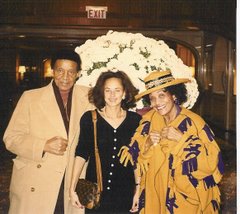
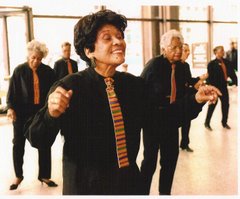
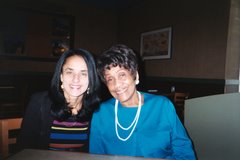
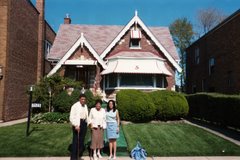
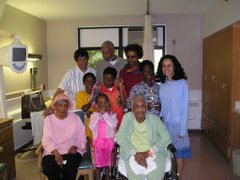

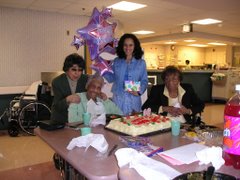
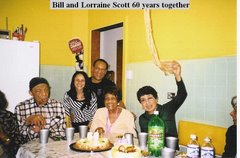
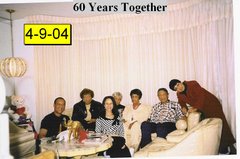
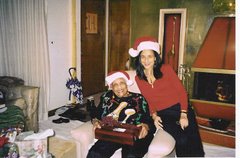
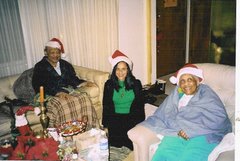
.jpg)